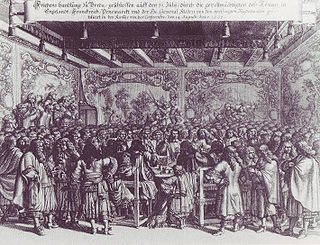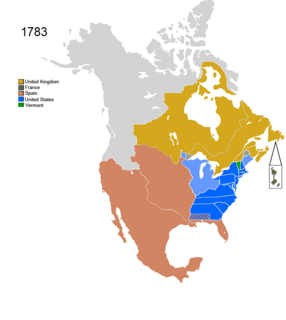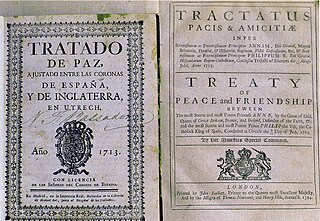 W
WThe Treaty of Amiens temporarily ended hostilities between France and Great Britain during the French Revolutionary Wars. It marked the end of the French Revolutionary Wars; after a short peace it set the stage for the Napoleonic Wars. Britain gave up most of its recent conquests; France was to evacuate Naples and Egypt. Britain retained Ceylon and Trinidad. It was signed in the city of Amiens on 27 March 1802 by Joseph Bonaparte and Marquess Cornwallis as a "Definitive Treaty of Peace." The consequent peace lasted only one year and was the only period of general peace in Europe between 1793 and 1814.
 W
WThe Boxer Protocol was signed on September 7, 1901, between the Qing Empire of China and the Eight-Nation Alliance that had provided military forces ; after China's defeat in the intervention to put down the Boxer Rebellion. It is often regarded as one of the Unequal Treaties.
 W
WThe Peace of Breda, often referred to as the Treaty of Breda was signed in the Dutch town of Breda, on 31 July 1667. It consisted of three separate treaties between England and each of its opponents in the Second Anglo-Dutch War: the Dutch Republic, France, and Denmark–Norway. It also included a separate Anglo-Dutch commercial agreement.
 W
WThe 1720 Treaty of The Hague was signed on 17 February 1720 between Spain and the Quadruple Alliance, established by the 1718 Treaty of London. Its members included Britain, France, the Dutch Republic and Austria.
 W
WThe Peace of Paris of 1783 was the set of treaties that ended the American Revolutionary War. On 3 September 1783, representatives of King George III of Great Britain signed a treaty in Paris with representatives of the United States of America—commonly known as the Treaty of Paris (1783)—and two treaties at Versailles with representatives of King Louis XVI of France and King Charles III of Spain—commonly known as the Treaties of Versailles (1783). The previous day, a preliminary treaty had been signed with representatives of the States General of the Dutch Republic, but the final treaty which ended the Fourth Anglo-Dutch War was not signed until 20 May 1784; for convenience, however, it is included in the summaries below.
 W
WThe Peace of Ryswick, or Rijswijk, was a series of treaties signed in the Dutch city of Rijswijk between 20 September and 30 October 1697. They ended the 1688 to 1697 Nine Years' War between France, and the Grand Alliance, which included England, Spain, Emperor Leopold, and the Dutch Republic.
 W
WThe Treaty of San Francisco , also called the Treaty of Peace with Japan , re-established peaceful relations between Japan and the Allied Powers on behalf of the United Nations to officially end hostilities and to seek redress for actions up to and including World War II. It was officially signed by 49 nations on 8 September 1951, in San Francisco, California, U.S. at the War Memorial Opera House, with three member states refusing to sign: The Soviet Union, Poland and Czechoslovakia, all part of the Soviet Bloc, and a further two states refused to send representatives: India and Yugoslavia. Italy and China were not invited, the latter due to disagreements on whether the Republic of China or the People's Republic of China represented the Chinese people. Korea was also not invited due to a similar disagreement on whether South Korea or North Korea represented the Korean people.
 W
WThe Treaty of Peace with Italy was signed on 10 February 1947 between Italy and the victorious powers of World War II, formally ending hostilities. It came into general effect on 15 September 1947.
 W
WThe Twelve Years' Truce was the name given to the cessation of hostilities between the Habsburg rulers of Spain and the Southern Netherlands and the Dutch Republic as agreed in Antwerp on 9 April 1609. It was a watershed in the Eighty Years' War, marking the point from which the independence of the United Provinces received formal recognition by outside powers. For Spain the Truce was seen as a humiliating defeat as they were forced to make several sacrifices but they scarcely got anything in return. For the time of its duration however the Truce allowed King Philip III and his favorite minister the Duke of Lerma to disengage from the conflict in the Low Countries and devote their energies to the internal problems of the Spanish Monarchy. The Archdukes Albert and Isabella used the years of the Truce to consolidate Habsburg rule and to implement the Counter-Reformation in the territories under their sovereignty.
 W
WThe Peace of Utrecht is a series of peace treaties signed by the belligerents in the War of the Spanish Succession, in the Dutch city of Utrecht between April 1713 and February 1715. The war involved three contenders for the vacant throne of Spain, and involved much of Europe for over a decade. The main action saw France as the defender of Spain against a multinational coalition. The war was very expensive and bloody and finally stalemated. Essentially, the treaties allowed Philip V to keep the Spanish throne in return for permanently renouncing his claim to the French throne, along with other necessary guarantees that would ensure that France and Spain should not merge, thus preserving the balance of power in Europe.
 W
WThe Peace of Westphalia is the collective name for two peace treaties signed in October 1648 in the Westphalian cities of Osnabrück and Münster. They ended the Thirty Years' War and brought peace to the Holy Roman Empire, closing a calamitous period of European history that killed approximately eight million people.